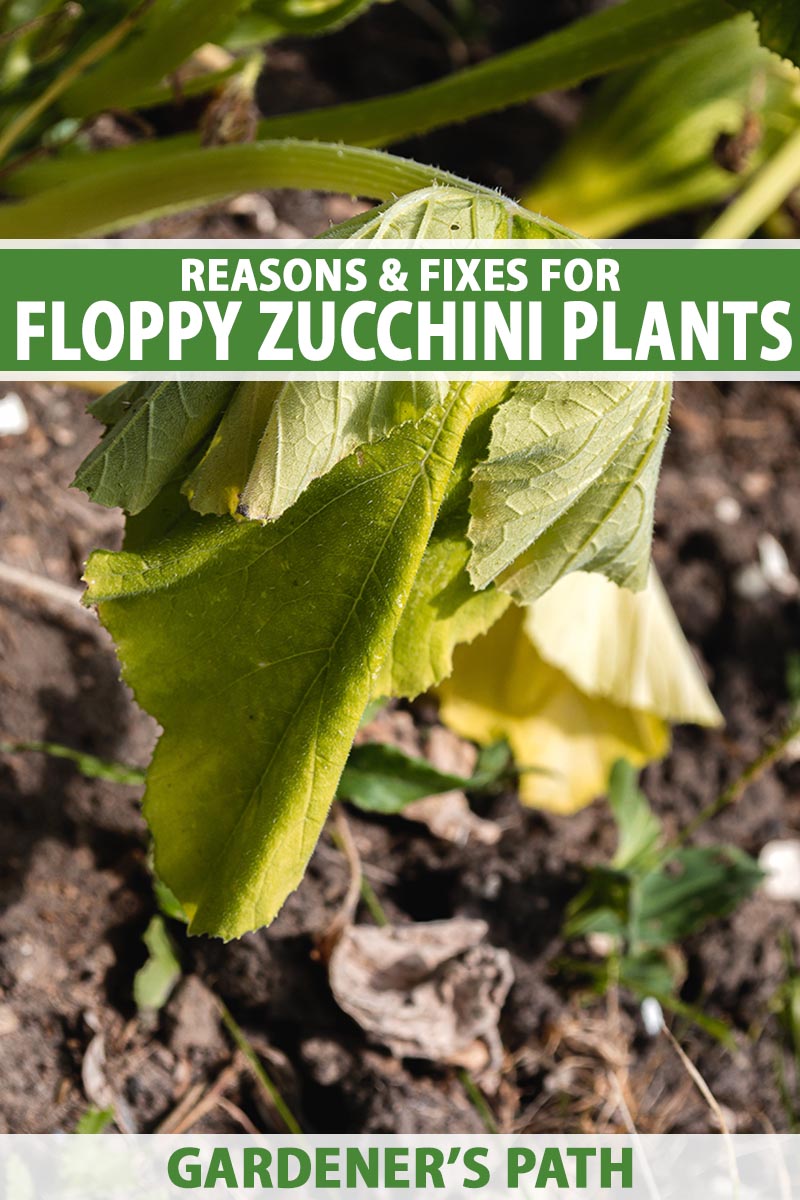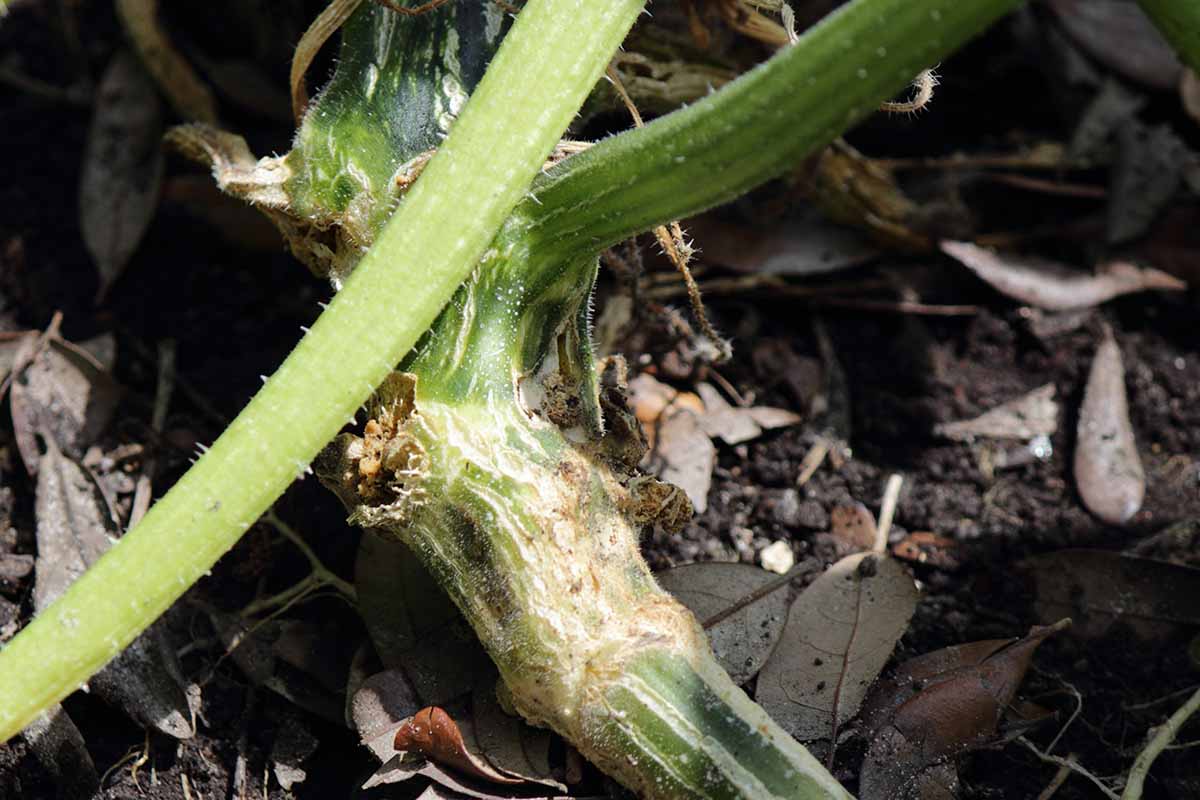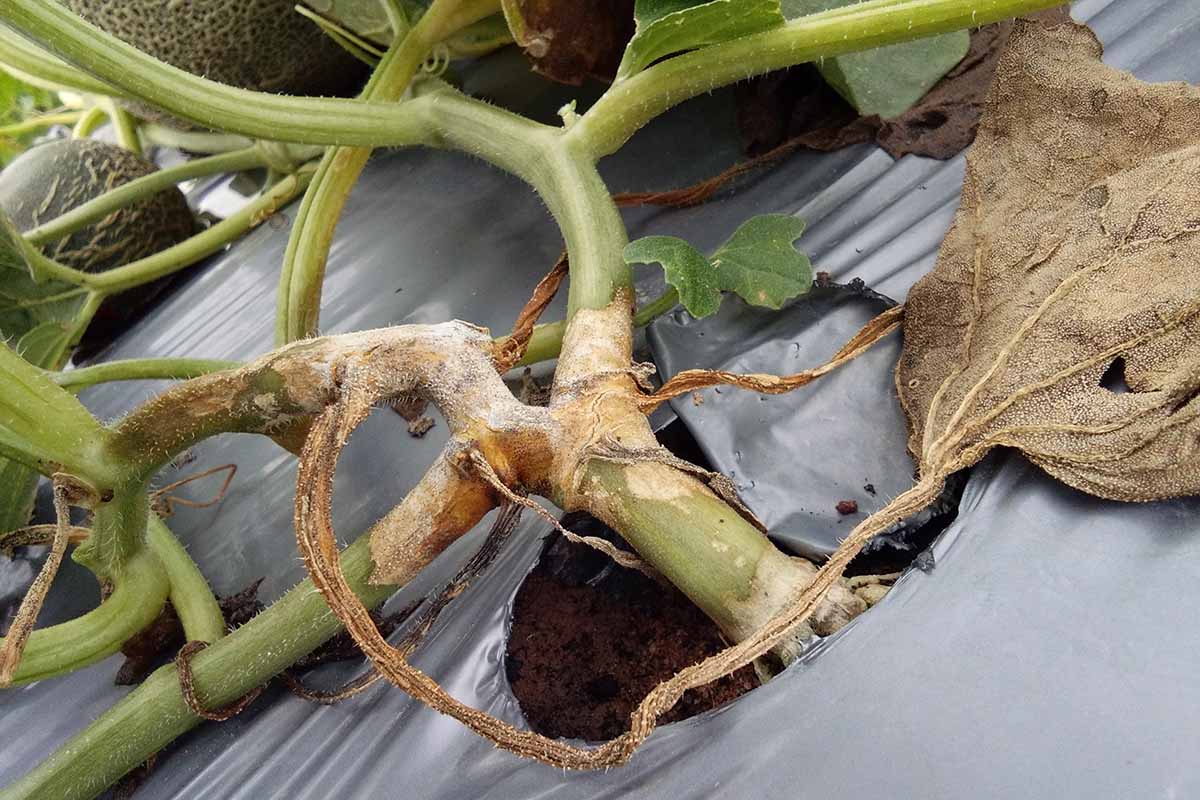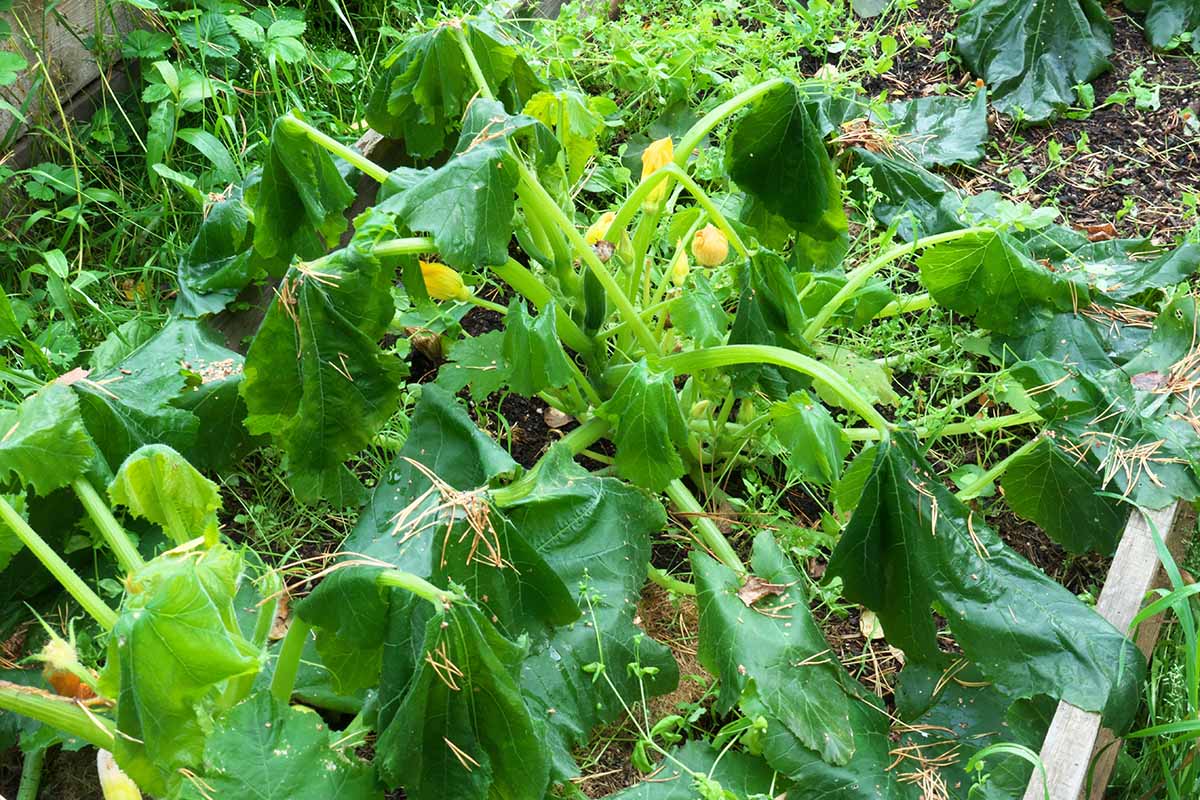Forgetting that she’s not a vegetable gardener, I was recently lamenting to my daughter Lucy that at least a couple of my zucchini plants end up flopping over each growing season.
“Oh, are they just being dramatic?” she asked, humorously.
If only that were the explanation! Homegrown zucchini, Cucurbita pepo, will droop, fall, or sag for various reasons, and none of them are the least bit entertaining.

We link to vendors to help you find relevant products. If you buy from one of our links, we may earn a commission.
In this guide, I’ll cover a few of the most common reasons zucchini may flop, along with some preventive measures and potential treatments.
Learning the causes of this particular ailment will help you this season, sure, but it will also make it possible to enjoy a prolonged harvest of this popular summer squash for seasons to come.
Whether you’re storing the knowledge so you can spot problems if they occur or you’re already staring at drooping plants, here’s what could be at issue:
5 Reasons Zucchini Flops Over
Though renowned for their fast growth and prolific yields, zucchini is not entirely carefree in the garden.
For the most part, once a plant has collapsed or fallen over, it’s too late to do much to revive it.
That’s why it’s so important to pay attention to these potential causes before the damage is done, and also to take steps to prevent them from flopping over in the first place.
Here are the top reasons your C. pepo might slump over and what to do to prevent or combat each one:
1. Damping Off
Damping off afflicts newly germinated seed, usually because it’s too wet and the soil contains one of the many oomycetes or fungi that cause this disease, including Pythium, Rhizoctonia, and Fusarium species.
You’ll recognize this condition by its speed. One minute the sprouts are green and happy, the next they’ve fallen over and wilted.
They’re not salvageable and should be disposed of immediately in the trash. If you wish to try again, sow new seeds in a different spot using fresh soil mix.
Next time, be sure to sow in well-draining soil, only in an area where you haven’t grown cucurbits before, and buy certified disease-free seeds from reputable vendors.
You can learn more about detecting and preventing damping off in our guide to zucchini diseases.
2. Squash Vine Borers
Vine borers, Melittia cucurbita, are a menace! They lay eggs at the plant’s crown, where the main stem meets the soil’s surface.
When the larvae hatch, they tunnel into the stem to feed, wrecking the plant’s vascular system.

Once these chubby white caterpillars with brown heads get established, the plant is doomed, with the main stem weakening until it collapses and the whole plant falls over.
You’ll know they’re the ones wreaking havoc if you spot little blobs that look like yellow sawdust. These are actually vine borer frass – excrement.
I’ve never had much luck with this, but if your zucchini starts falling over, you could look for the frass that indicates where the larvae are munching.
Then use a sterile knife to slice the vine open at that spot and scoop out and destroy the borer. (Yes, it’s gross).
Then pile fresh soil on top of the stem and hope it re-roots and carries on.
How can you keep vine borers away from your crop? First, it’s important to rotate crops so they won’t emerge from infested soil to attack new plants in the spring.
Make sure to look for the eggs where the stems emerge from the ground, and destroy them with insecticidal soap and a disposable wipe.
Some gardeners use a preventive application of insecticidal soap after the seedlings are a few inches tall.
You can also prohibit the bugs from laying eggs in the first place with a row cover, but that tactic necessitates removing the covers when the plants flower and need pollination – or hand pollinating.
Learn more about coping with squash vine borers in our guide to common zucchini problems.
3. Bacterial Wilt and Cucumber Beetles
A one-two punch causes the malady known as bacterial wilt. The bacteria lives in cucumber beetles and is encouraged by overly wet soil and humid conditions.
The beetles attack the seedlings and transfer the bacteria, which clogs the plant’s vascular system.
This results in vines that wilt, first just a leaf or two, but flopping over completely within a couple of days.
You can help protect your crops from the beetles by covering them with row cover up until they bloom, or growing them under row cover the entire season and hand pollinating the blossoms.
It’s also a good idea to improve air circulation by spacing the plants at least a foot apart and pruning them if they get too shrubby.
If you can spot them in time, you may be able to remove the infected specimens before the wilt sweeps through the patch.
In my experience, once wilt has seized hold, the best solution is to start over and grow your zucchini in a container for this season.
4. Gummy Stem Blight and Black Rot
There is no disguising the “ick” factor when a disease has “gummy” or “rot” in the description. And both of these fungal diseases are aptly named.
Caused by the fungus Didymella bryoniae, gummy blight causes damping off in newly sprouted zucchini.

In more mature plants, the fungus creates lesions on the leaves that are brown or tan and drips a red-brown gum, hence the name.
As the lesions get larger, they can girdle the stems, and this causes entire plants to collapse.
Sorry to say, but usually once gummy blight has gotten established, the vines will collapse and must be removed and destroyed.
Black rot is also caused by D. bryoniae. It typically affects only the fruit, but as it gains momentum, it can also kill the plant, which will cause that telltale slumping over that we all dread.
These fungi can spread via the wind, infected seeds, or purchased seedlings, so make sure you’re purchasing certified disease-free seeds from reliable growers.
Any cuts or wounds on the stems of older specimens can also allow the fungus to breach the plant. Cucumber beetles, melon aphids, and powdery mildew all encourage gummy blight.
Rotating your crops for two or three years before planting any cucurbits in the same spot is one way to discourage gummy blight and black rot.
Another is to remove and destroy or till under any plant debris each year after harvest.
5. Frost Damage
There is one time zucchini may fall over or collapse, but it’s not tragic or even particularly annoying.

Once these warm-weather-loving plants are subjected to frost, they ordinarily flop over the next day.
You may still be able to harvest a few lingering fruits, but the plants are done at that point, hopefully after a long, productive season.
Learn more about protecting zucchini from frost in our guide.
Next Time, No Flopping
Zucchini has this really fast germination rate, about a week maximum. Many types will also start producing fruits 45 to 50 days after sowing.

I’m reminding you of these traits as a source of comfort. Often, if your plants succumb to one of the ailments I’ve described, you can sow a successive crop and still have time to harvest this year.
And if not, there’s always next year when you’ll already possess this knowledge about preventing them from falling over.
Do you have any input on coping with collapsing zucchini plants, or questions on this topic for me, or your fellow gardeners? The comments section below awaits your input.
We also have a wealth of zucchini growing tips available on Gardener’s Path. Check out these guides next:


